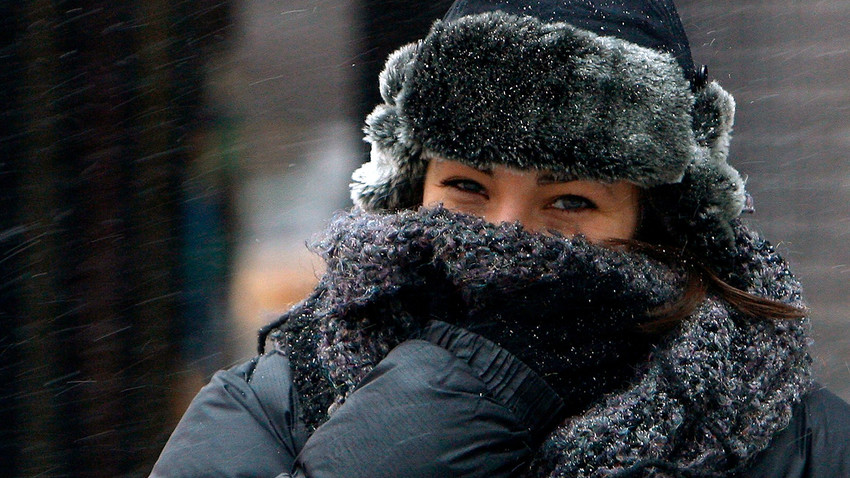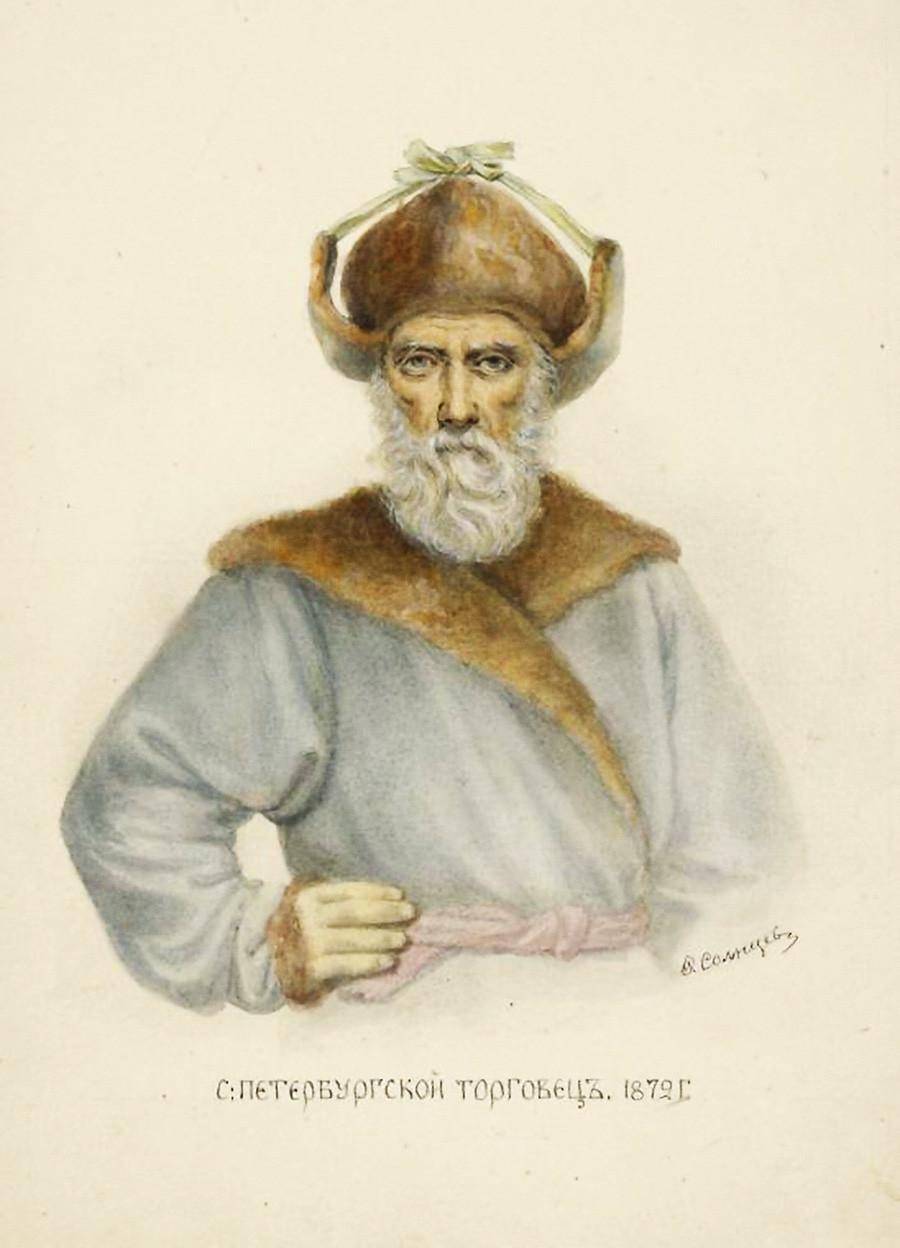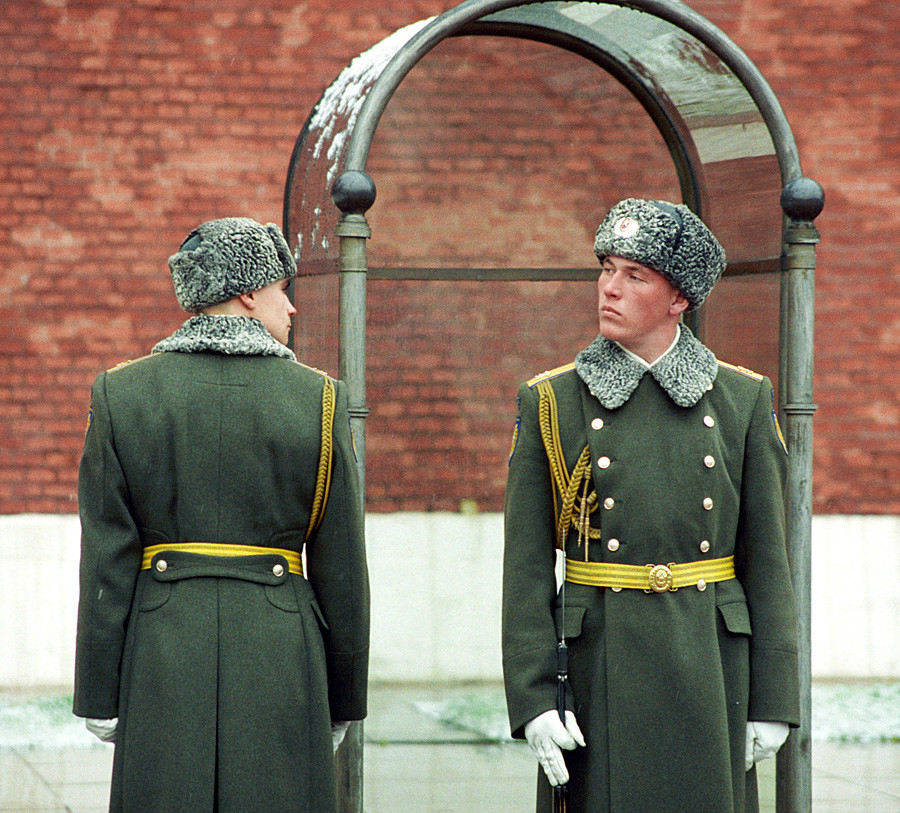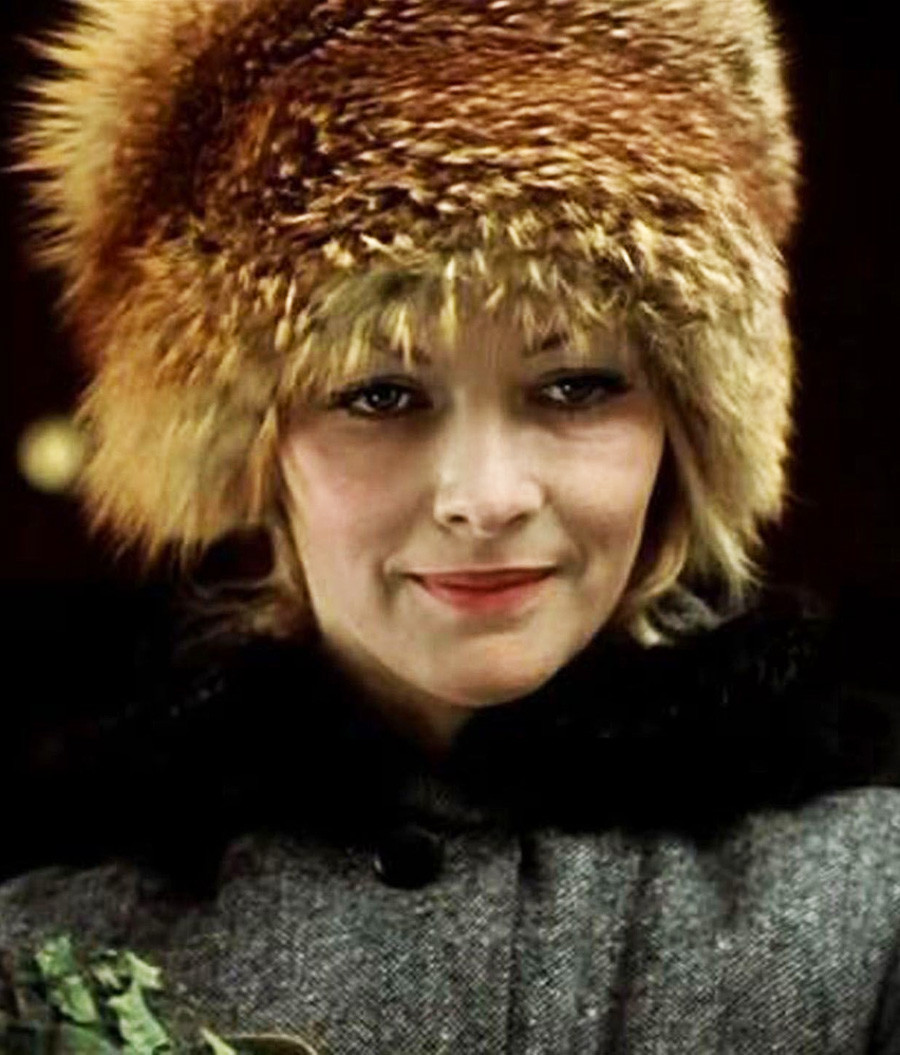
Ushanka always keeps the ears from freezing.
ReutersA warm winter hat, called “shapka” in Russian, is an essential element of Russian winter attire. For a fact, Russians don't wear shapkas with T-shirts, as shown in the Hollywood movie “Armageddon.” But the country is very rich in all kinds of shapkas; the range of materials, designs and images is almost endless.
The most widely recognized Russian winter hat is “ushanka,” a thick and warm hat with earflaps. The design dates back to the 17th century, when someone invented the “treukh” (literally, “three ears”).
The treukh is a round fur hat, usually made of sheepskin, with a broad flap at the back that covers the neck all the way to the shoulders, and two smaller earflaps. For added protection from the wind and freezing cold, the earflaps have straps that can be tied up under the chin.

The treukh. Aquarel.
Feodor SolntsevThe treukh was especially popular in central and northern Russia, where winters are particularly damp and chilly. It may sound surprising, but winters in Siberia are actually less daunting than in Moscow: the Siberian temperatures are lower, but low humidity makes those temperatures feel less chilly and easier to bear.
The modern ushanka design is relatively recent. After the 1917 Bolshevik revolution, units of the White Army, which fought for the Tzar and were led by Gen. Kolchak, were issued very practical hats called “Norvezhka” (literally, "Norwegian”).
As the name implies, the design was invented by Norwegian conquerors of the North. Its main difference from the treukh is that the earflaps are much longer, so they can be tied up under the chin for extra warmth, or on top of the head to get them out of the way when it’s not too cold. The Red Army soon borrowed that successful design as well.
During the period when Russia fought in World War II from 1941 to 1945, entire fur factories were pressed into making nothing but ushankas for the Red Army’s needs. Various Russian uniformed agencies continue to use the ushanka to this day, in various color schemes (grey for the police, black for the Navy, etc.).
The military uniform code requires that the earflaps always remain tied up at the top for extra decorum. The soldiers who have to spend long hours in bitter cold when they are out on patrol or guard duty have found a solution to this problem. They wear ushankas that are a couple of sizes too big for them; their heads completely drown in those hats, but at least it keeps their ears from freezing.

Ushankas now are the part of the Russian winter military uniform.
Emil Matveyev/TASSThe successful military design soon became a runaway success with civilian Soviet hatters. Most of the Soviet men owned at least one such hat, made of fur, deerskin, beaver skin, and other materials.
A rival design that emerged in the mid-1970 was the so called “petushok” (literally, cockerel). These tall and flat knitted hats look like a cockscomb, hence their name. Many were emblazoned with the word Sport, or decorated with fir-tree or reindeer patterns.
Quite a few also had a pom-pom or a bobble at the top. The petushok design soon became so iconic that it was even made part of the Russian national team's Olympic uniform at the Vancouver Games in 2010.
Yet another popular Russian hat is the “kubanka,” so named after the southern province of Kuban. The design arrived to Russia from Central Asia and the Caucasus; the Russian Cossacks in Kuban were the first to appreciate its merits.
A classical kubanka (and its variation called papakha) is a round hat with a flat top, made of soft karakul lambskin. A kubanka made of long fur, such as black fox, was an extremely fashionable accessory coveted by every Soviet woman.
It was made popular by the comedy “Irony of Fate,” which every Russian TV channel still feels obliged to run on more than one occasion every Christmas season, in honor of a long-standing tradition. The main heroine of the film sports a magnificent kubanka.

The main heroine of the "Irony of Fate" wore the most fashionable hat in the USSR.
KinopoiskKubankas remain fashionable to this day. Many Russian women have inherited them from their mothers, who often stored them on top of tall round jars, to keep the shape and avoid any damage to the fur.
Kubankas can be worn with classical or flared overcoats in the 1960s style, so long as these coats don't have a fur collar.
A combination of a fur coat and a fur hat is considered a faux pas among Russian fashionistas, although nothing beats it for sheer warmth.
Ushanka, meanwhile, isn't giving up without a fight, either. In fact, it has made it into the winter collections of such famous brands as Paul Smith, Bally, and Ralph Lauren.
The Chanel 2013-2014 collection also includes ushanka-like hats made of brightly colored dyed fur.
All rights reserved by Rossiyskaya Gazeta.
Subscribe
to our newsletter!
Get the week's best stories straight to your inbox